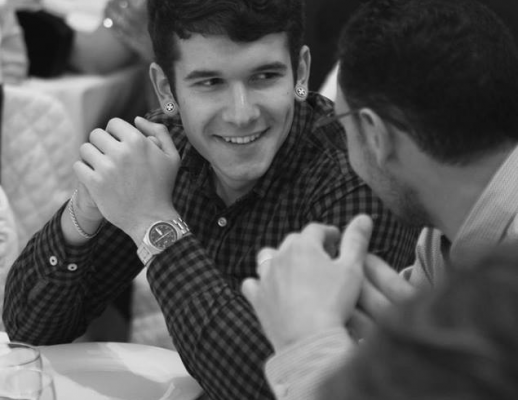3 rules of super productive meetings by Steve Jobs
Leonid Zverugowrote this on Окт 30, 2015

Do your meetings seems to be a pointless waste of time with a strong feeling of something left unsaid? Take over the experience of one of the most efficient companies in the world where people are result-oriented and know the price of working hours.
Somebody desperately fights with sleepiness, somebody writes messages secretly and somebody watches a gorgeous colleague stealthily. There are many ways to wile the time away on a meeting. But not in the walls of Apple company because previous director knew perfectly well how to conduct meetings. Peter Gluhov has published an article on the 3 main Steve Job's rules concerning productive meeting.
1. The Small Group Rule
Ken Segall, an American blogger, worked over 12 years with Steve Jobs. In his book “Insanely Simple” the author describes one significant meeting. Apple managers had a meeting with their partners from an advertising agency one day. Steve was in a good mood and was very communicative. But when he started the meeting, the atmosphere in the room totally changed. He stopped his speech and the tone of his voice grew colder. The thing is that Jobs saw an unnecessary participant. It was a woman who took part only in some common marketing company projects. “I don’t think we need you today. Thank you”,— Steve said. Then he proceeded as if nothing had happened.
Ken explains that the manager became a victim of one of the most important Job’s principle — a simplification rule.
Apple CEO preferred to accumulate small groups of smart people. There were no random or invited people on his meetings. Each participant had to be there due to some reason. Either you have a decisive meaning or you don’t take part in it at all. There’s nothing personal, it’s business.
Steve was sure that small teams consisting of creative people became the driving force of Apple corporation. That’s the only way when employees are result-oriented and motivated to show high quality in their work. Nobody needs spectators.
There were no exceptions to this rule. Once Barack Obama invited Steve to a meeting of techno magnat?s. But he refused as there were too many people invited.
2. The Model of Personal Responsibility
Several years ago Adam Lashinsky, a Fortune journalist, wrote a big article about inner processes in Apple which made the company the most expensive in the world. One of the key thoughts is that each employee clearly understands his/her responsibility.
Adam mentions DRI term (directly responsible individual). DRI was written opposite each point in order paper. This way every interested person can address a responsible person with questions.
Many American organizations have taken over the efficient model, including Flipboard. One of managers of the popular news aggregator makes compliments and mentions a significant benefit from appointing responsible people. The lead a subordinate team to a solution of any task and make the process transparent for other adjacent branches.
The system guarantees that there won’t be a goal forgotten or put aside.
3. The System of Direct Communication
A biographical book “Steve Jobs” written by an American journalist Walter Isaacson, is based on 40 exclusive interviews with the founder of Apple. There’s plenty of interesting information on the pages of the book. A furious hatred of Steve Jobs to graphic presentation is also mentioned there.
Jobs denied formal presentations. He preferred a face-to-face communication. He conducted meetings with his advertisers and marketing specialists on Wednesdays. There were no technologies and no slideshows. Jobs wanted his team to produce critical thoughts and keep a passionate discussion.
I hate it when people substitute thoughts for slides. I want them to put ideas on the table and discuss them not to show a pile of pictures on a projector. A person who know what he/she is telling about doesn’t need PowerPoint.

